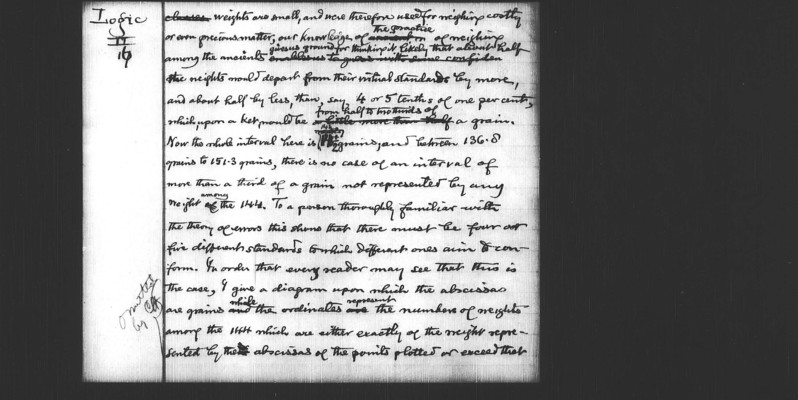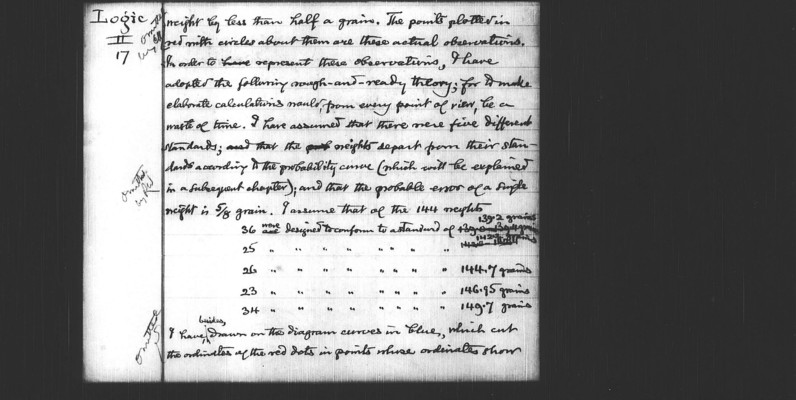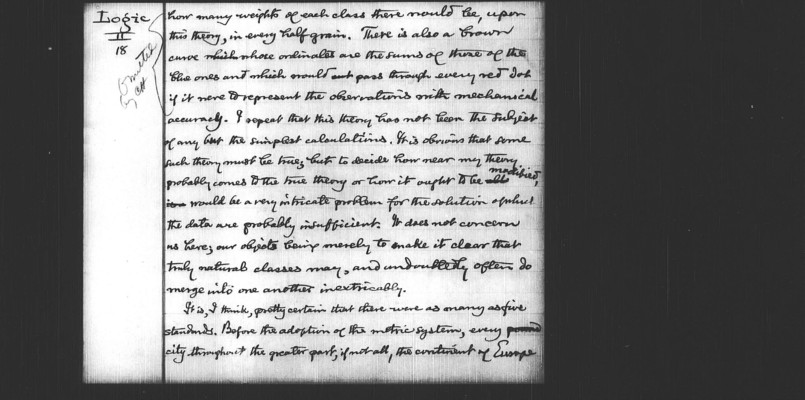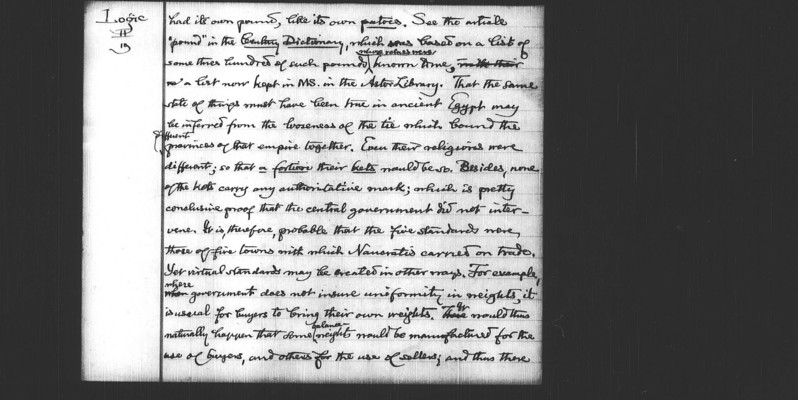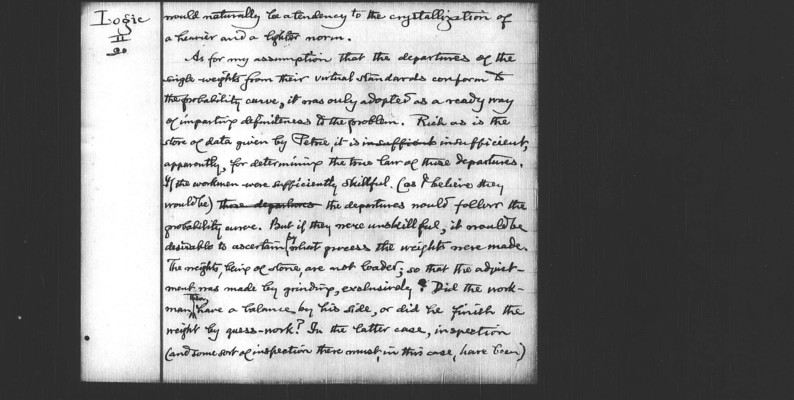Pages
16
Logic II 16
classes weights are small, and were therefore used for weighing costly or even precious matter, our knowledge of ancient the practive of weighing among the ancients allows us to guess with some confidence gives us ground for thinking it likely that about half the weights would depart from their virtual standards by more, and about half by less, than, say, 4 or 5 tenths or one per cent, which, upon a ket, would be a little more than half from half to two thirds of a grain. Now the whole interval here is 14 1/2 grains; and between 136.8 grains to 151.3 grains, there is no case of an interval of more than a third of a grain not represented by any weight of among the 144. To a person thoroughly familiar with the theory of errors this shows that there must be four or five different standards to which different ones aim to conform. In order that every reader may see that this is the case, I give a diagram upon which the abscissas are grains and while the ordinates are represent the numbers of weights among the 144 which are either exactly of the weight represented by their abscissas of the points plotted or exceed that
17
Logic II 17
weight by less than half a grain. The points plotted in red with circles about them are these actual observations. In order to have represent these observations, I have adopted the following rough-and-ready theory; for to make elaborate calculations would, from every point of view, be a waste of time. I have assumed that there were five different standards; and that the [?] weights depart from their standards according to the probability curve (which will be explained in a subsequent chapter); and that the probably error of a single weight is 5/8 grain. I assume that of the 144 weights
| 36 |
|
|
| 25 | " " " " " " " " |
|
| 26 | " " " " " " " " | 144.7 grains |
| 23 | " " " " " " " " | 146.95 grains |
| 34 | " " " " " " " " | 149.7 grains |
I have besides drawn on the diagram curves in blue, which cut the ordinates of the red dots in points whose ordinates show
18
Logic II 18
how many weights of each class there would be, upon this theory, in every half grain. There is also a brown curve which whose ordinates are the sums of those of the blue ones and which would not pass through every red dot if it were to represent the observations with mechanical accuracy. I repeat that this theory has not been the subject of any but the simplest calculations. It is obvious that some such theory must be true, but to decide how near my theory probably comes to the true theory or how it ought to be able modified, it would be a very intricate problem for the solution of which the data are probably insufficient. It does not concern us here; our objects being merely to make it clear that truly natural classes may, and undoubtedly often do merge into one another inextricably.
It is, I think, pretty certain that there were as many active standards. Before the adoption of the metric system, every city throughout the greater part, if not all, the continent of Europe
19
Logic II 19
had its own pound, like its own patois. See the article "pound" in the Century Dictionary, which was based on a list of some three hundred of such pounds whose values were known to me, with their a list now kept in MS. in the Astor Library. That the same state of things must have been true in ancient Egypt may be inferred from the looseness of the tie which bound the different provinces of that empire together. Even their religions were different; so that a fortiori their kets would be so. Besides, non of the kets carry any authoritative mark; which is pretty conclusive proof that the central government did not intervene. It is, therefore, probable that the five standards were those of five towns with which Naucratis carried on trade. Yet virtual standards may be created in other ways. For example, when where government does not insure uniformity in weights, it is usual for buyers to bring their own weights. These It would thus naturally happen that some balance-weights would be manufactured for the use of buyers, and others for the use of sellers, and thus there
20
Logic II 20
would naturally be a tendency to the crystallization of a heavier and a lighter norm.
As for my assumption that the departures of the single weights from their virtual standards conform to the probability curve, it was only adopted as a ready way of imparting definiteness to the problem. Rich as is the store of data given by Petrie, it is insufficient insufficient, apparently, for determining the true law of these departures, If the workmen were sufficiently skillful. (as I believe they would be) these departures the departures would follow the probability curve. But if they were unskillful, it would be desirable to ascertain by what process the weights were made. The weights, being of stone, are not loaded; so that the adjustment was made by grinding, exclusively. Did the workman then have a balance by his side, or did he finish the weight by guess-work? In the latter case, inspection (and some sort of inspection there must, in this case, have been)
